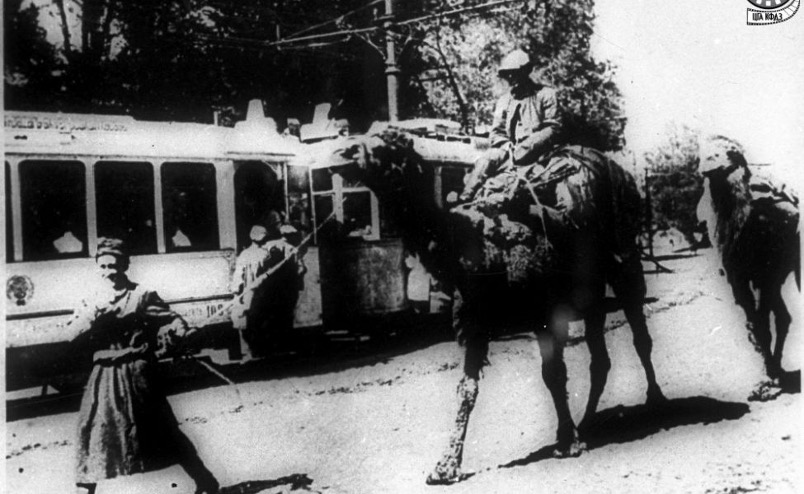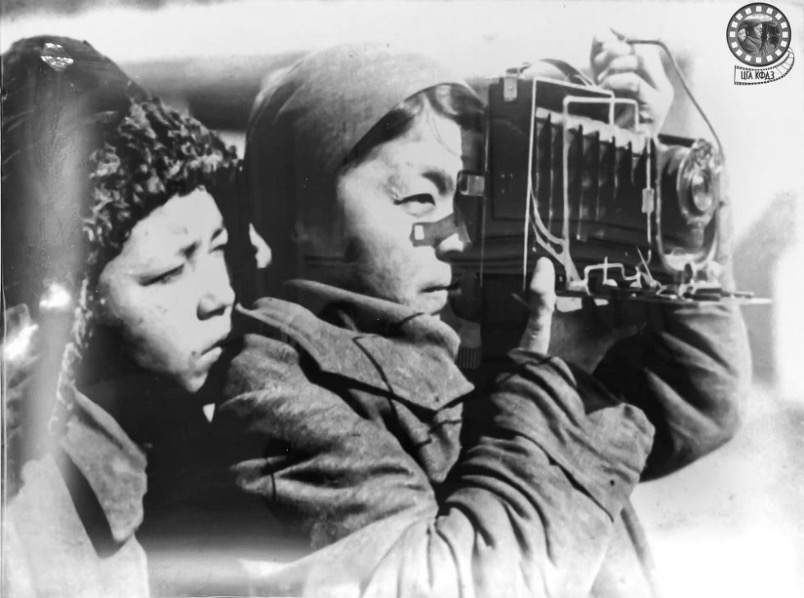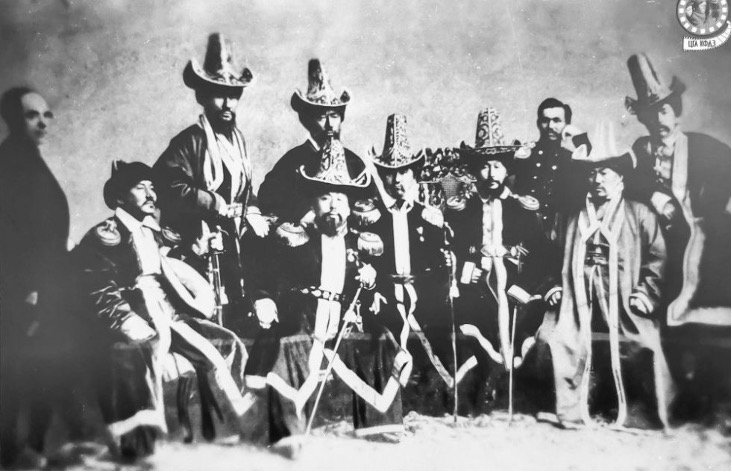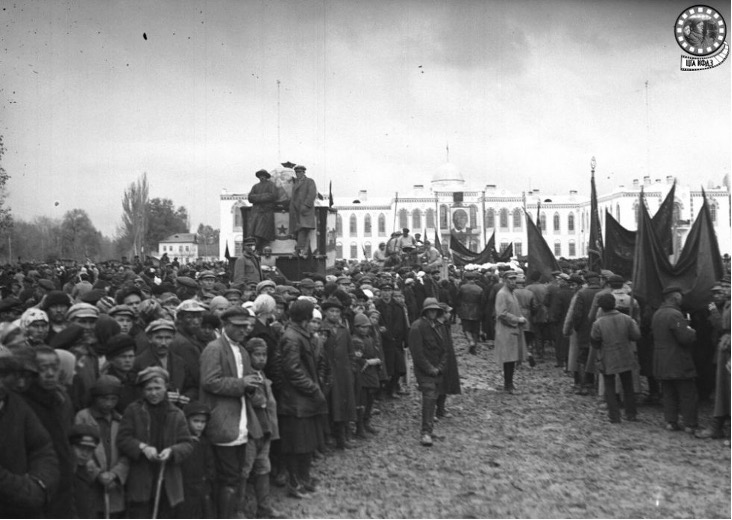The Central State Archive of Film and Photographic Documents and Sound Recordings is the only specialized archival institution in the republic, whose funds contain retrospective audiovisual information on the history of Kazakhstan from the end of the XIX century to the XXI century.

Audio-visual document
An audiovisual document is a document containing visual and/or audio information, the reproduction of which requires the use of appropriate equipment.
Audiovisual documents are a valuable historical source reflecting the events of the socio-political, cultural, and economic life of society, they create a visual and imaginative representation of the subject, reproduce the accompanying and emotional background, and provide information about the color of the era, everyday life, appearance and mood of people.
In addition, the concept of "audiovisual electronic document" is being actively introduced into the circulation of archival terminology, which means electronic documents containing audiovisual information created using digital and computer technology, stored on external media.
At the same time, the unique audiovisual heritage, representing not only historical but also cultural value, requires constant attention due to the uniqueness and vulnerability of the medium – the original documents of the archival fund, mainly on film media. In this regard, the archive for the last 20 years has been designed to solve a two–pronged task - preservation of original documents in proper form and their translation into modern media.

Audiovisual archives
Audiovisual archives – by definition, technical archives, at each site of the archive's activity from the stage of accepting documents for state storage to providing information to researchers, the archive needs special equipment that meets modern requirements.
Creation history
Over the more than 80-year history of its existence, the State Archive has undergone a number of reorganizations and transformations. It all began with the Resolution of the Council of People's Commissars of the USSR dated March 29, 1941 No. 723 "On approval of the Regulations on the State Fund of the USSR and the Network of State Archives of the USSR", the Council of People's Commissars of the Kazakh SSR adopted Resolution No. 25 dated January 27, 1943 "On the organization of the Central Republican State Archive of Film and Photographic Documents in the city of Alma-Ata from April 1, 1943".
According to the regulations, the Central Republican State Archive of Film and Photographic Documents was a research institution and was under the jurisdiction of the archival department of the NKVD of the Kazakh SSR.
The film Fund of the archive has the first documentary essays shot by the operators of the Vostokkino studio and the Mezhrabprom film trust. Of particular value among the films of those years are the films "The Life and way of life of the Kazakhs" (1927), "Alma-Ata – the capital of Kazakhstan" (1929), "Turksib" (1930), etc.
Separate pages of the history of the republic are documentary films-portraits of participants in the civil and Patriotic War, heroes of labor, scientists and cultural figures: "Turar Ryskulov", "Aliya", "Dina", "Amangeldy Imanov", "Manshuk", "High Sky of Talgat", "Mazhit Begalin", "Saken Seifullin" and many others.
Films, magazines, special issues, and plots stored in the archive make up a unique film chronicle of Kazakhstan (about 33,101 items).
Central United Film Studio of the country (CSC)
Since 1943, the first kilometers of film – the living history of the Second World War - began to accumulate in the archive's funds. The formation of the rich documentary heritage of the archive of that time was facilitated by the Central United Film Studio of the country (TSOKS), created by the cinematographers of Moscow, Leningrad and Alma-Ata. The glorious period of TSOX in all respects is associated with world-famous names: Dziga Vertov, Roman Carmen, Eduard Tisset, Irina Venger, Yakov Poselsky, Mikhail Slutsky.
During these years, documentaries "Home Guardsmen" were created about the heroic work of Kazakhstanis in the rear, about the work of miners–home guardsmen, "Patriots", "Gift", "The most expensive", "To you, the front" (1942); "Aitys" about the competition of akyn improvisers, in the frames – Dzhambul, Kenen Azerbayev, Shashubai Koshkarbayev, Mukhtar Auezov, Kanysh Satpayev, etc.; "Eighth Guards", "To the sound of dombra", etc. (1943); "Leningraders are my pride" (1944). Issues of Soyuzkinojournal were periodically published on the basis of the Central Information Center in Alma-Ata, some of which remained in Kazakhstan after the end of the war, and now makes up the "golden fund" of the archive.
Photo documents and phonofund of the archive
The collection of photographic documents is extensive and diverse, numbering 190,202 storage units. The earliest of them date back to the end of the XIX – beginning of the XX century.

In the picture: The delegation of the Kazakh sultans in St. Petersburg, 1860
Basically, these are everyday and specific images, the value of which, as documentary evidence of the era, is increasing every day. The archive is particularly proud of the personal funds and collections donated and deposited with it.
A kind of business card of the archive is the collection of photographic documents by local historian and photographer D.P.Bagaev, where the negatives on glass plates are of particular value.
The phonofund of the archive is unique, comprising 19,872storage units in magnetic sound recordings, records, compact cassettes, compact discs. These are recordings of Kazakh folk music, works performed by the author, recordings of aitys, the first Kazakh operas, live voices of outstanding contemporaries. Today, the funds are replenished with materials that tell about the new Kazakhstan – a free and sovereign state.
Phonodocuments on magnetic film and gramophone records are the type of audiovisual documents that the archive first of all needed to preserve and transfer to modern media: this is due to the technical condition of a nine–millimeter magnetic film (the life cycle of such a film is 15-25 years, there are a lot of phonodocuments in the archive funds 30-40 years of history).

In the picture: Almaty railway station,1963.
These documents are subject to serious temporary changes (physical and chemical), often on the verge of extinction. Some of them were not in demand due to the inability to listen to sound recordings on equipment that no longer exists (gramophones, turntables, tape recorders for reel-to-reel cassettes of 4, 9 recording speeds). There was a problem with backward compatibility: having saved the originals on film and other traditional media, the archive could eventually lose the opportunity to present documents to users if it had not started work on translating these documents to modern media in a timely manner.
The Asyl Mura project
The idea of implementing the well-known "Asyl Mura" project arose. The first collection from the musical series "Asyl Mura" was dedicated to the work of Garifulla Kurmangaliyev, the final one was dedicated to the "father" of the Kazakh opera Mukan Tulebayev. Since the project was non–commercial, these albums cannot be found on sale - all copies were donated to the collections of libraries, museums, music schools and conservatories. In addition, as part of the project, the archive for the first time received equipment that allowed for listening, restoration, and transfer to digital recording media, the technical condition of which was unsatisfactory. The second category of preserved phonodocuments were "especially valuable documents".
Only after solving these tasks – preservation and transfer to modern media of sound information – the archive began to promote the unique musical national heritage of the Kazakh people. As part of a successful project that lasted for 10 years and harmoniously resonated with the state program "Cultural Heritage", 18 CDs and albums were released in thousands of copies each. These discs and albums have become a kind of cultural brand of Kazakhstan not only in the republic, but also abroad.
Further projects and new opportunities
The baton was picked up by a project initiated by the Ministry of Culture of Kazakhstan, "1000 kuys", "1000 songs", entirely dedicated to compiling an anthology of the traditional musical heritage of the Kazakh people. Out of 1000 kuis performed by outstanding masters of dombra, sybyzgy, kobyz – this project brought together 1000 selected kuis, popularly recognized Kazakh dombrists – Kurmangazy, Tattimbeta, Kazangapa, D.Nurpeisova, K.Zhantleuova, J.Kalambaev, D.Myktybaev, T.Mombekov, G.Askarov, U. Bekenova, K.Akhmedyarova,70% of the works are from the funds of the Central State Library of the KFDZ.
Within the framework of the project, the archive has the opportunity for technical re-equipment, which allowed to continue the translation of phonodocuments to modern digital media.




